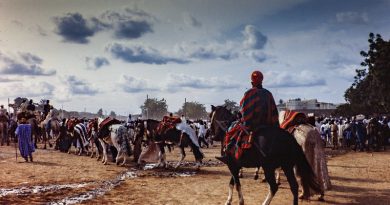Hiking the Oklahoma Plains
Trek Essentials
Where: Oklahoma, Midwest USA
Best season: April to June or Sept to Nov
Best sights: Attending a pow-wow with the Kiowa tribe
Watch out for: Heat related sickness if you come in the height of summer
The Plains of Oklahoma are home to more native Americans than any other state in the U.S. If you’re interested in Native American culture, this is the place to be.
Highlights
- Attending one of the many native American celebrations, known as pow-wows, that happen throughout the year.
- Hiking to the top of Elk Mountain in the Wichita Mountains National Wildlife Refuge.
- Sleeping in a teepee in the middle of the Great Plains of Oklahoma
The Route
Oklahoma is completely landlocked and borders Texas to the south and Kansas to the north. On our journey into American Indian territory, we headed to the Wichita Mountains, home of the Kiowa tribe. From there, we travelled north through the Coyote Hills, to the site of the Battle of Washita. For the final leg of our journey, we headed back around to Lawton, Oklahoma to attend a native gathering, known as a pow-wow.
Traveller’s Tips
The best time to visit Oklahoma is April to June and September to Early November. During the summer months, the heat is extremely intense. However, many of the pow-wows and major Native events do occur during the mid-summer months, so it’s wise to check the temperatures and bring a wide-brimmed hat and lots of sunscreen!
Did You Know?
- Oklahoma is home to more native Americans than any other state in the U.S. Many of the tribes settled here after being displaced from their homelands. The Kiowa originally came from Montana. In earlier days, the Cheyenne lived in Colorado, South Dakota and Montana. Today, Oklahoma is a wonderful place to learn about native America and to attend one of the numerous gatherings or ‘pow-wows’ that occur throughout the year.
- The name ‘Oklahoma’ comes from the Choctaw language. “Okla” means people and ‘humma’ means red. The state of Oklahoma conjures up images of dusty flat plains and fields of wheat. In fact, you’ll be surprised at the variety of terrain you can see here.
- The Wichita National Wildlife Refuge is a great place for hiking and watching wildlife. A visit here will really dispel the myth that Oklahoma is completely flat and featureless! Herds of buffaloroam the plains and if you go to the visitors center, you can arrange a hike to see bald eagles. At one time, there were sixty-four million buffalo here. Today there are only about seven hundred left.
- Located in the Wichita Mountains National Wildlife Refuge, Elk Mountain is an important place for Native Americans in Oklahoma. This is a place where young natives would come on a ‘vision quest’ and for fasting.
- In 1868 many Cheyenne lost their lives in the Battle of Washita, when Colonel Custer attacked Chief Black Kettle’s camp. Black Kettle had resisted the entreaties of some of his people, including his wife, to move their camp downriver. He refused to believe that officers would order an attack without first offering an opportunity for peace. Before dawn, the troopers attacked the 51 lodges, killing a number of men, women, and children. The engagement at the Washita might have ended very differently if the larger encampments to the east had been closer to Black Kettle’s camp. As it happened, the impact of losing winter supplies, plus the knowledge that cold weather no longer provided protection from attack, convinced many bands to accept reservation life as dictated by the US government forces.
More Information
The Pilot Productions team were guided by Bob Vetter of Journeys Into American Indian Territory.
Journeys into American Indian Territory
P.O. Box 929
Westhampton Beach, New York 11978
Tel: 1-800-458 2632 or (516) 878-8655
Fax: (516) 878-4518




